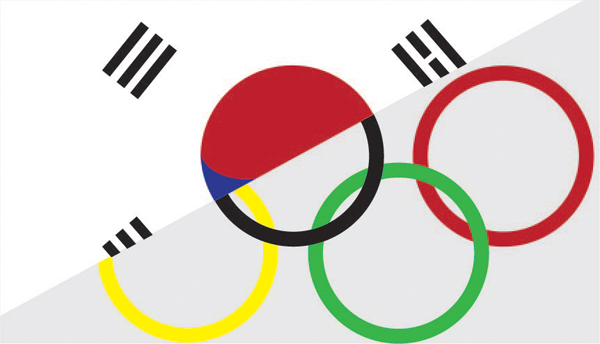Peace in motion
Examining culture through the winter olympic ceremonies.
February 11, 2018
Right now, all eyes are on Pyeongchang, South Korea, as the winter Olympics begin. Even with the whole country fixated on Korea, many people do not know much about the culture and traditions of the country we are watching so closely.
The Olympics were meant to unite and draw the different people in the world together and help them understand each other. Since we can’t all travel to Korea, in the spirit of the Olympics, I decided to sit down with a few of my Korean friends and learn more about Korean traditions.
South Korea has a rich, historic, cultural tradition that is completely unique to the country. Some of it was put on display at the Olympic opening ceremonies as the whole world turned to watch.
The ceremony was entitled “Peace in Motion,” a reference to the work towards friendship and unification that North and South Korea are currently undergoing. The two countries were one Korea until 1945 when the end of the Korean War left the two countries divided arbitrarily at the 38th parallel. The two countries share a language, history and traditional culture. They are competing at the Olympics together this year under a unified flag.
Technology as a part of Korea’s more modern history, was on full display at the ceremony. Korea prioritizes their technology, research, and development at one of the highest levels in the world.They emerged from humble Korean war beginnings to become a world leading in technology.
This year, to push the boundaries of technology a little further, the iconic Olympic rings were created by a multitude of drones carrying LED lights. They also added an augmented reality sky of constellations for the TV viewers. Learning and study are huge priorities in Korea, so it’s not surprising that this opening ceremony was the most technologically advanced one yet.
One of the most stunning moments of the event was the performance by the Korean drummers. The art form is called Samulnori in Korean. It came from Pungmul, which was a combination of music, dance, and acrobatics done by farmers and people in rural Korea.
Samulnori is a version of that adapted for concert halls and stages. Four sizes of drums are used: the janggu, which represents rain; the kkwaenggwari, which represents thunder; the jing, representative of the sounds of the wind; and the buk, which stands for clouds.
Samulnori, like many Korean traditions, trace their history back to Korea’s origins as an agricultural society. Until recent years, Korea was a largely agrarian society (like most countries were). Asian history is often overlooked in schools, so it’s easy to just think of Korea as the ultra modern country it is today. Korea has a longer history than the United States. The roots of their culture go back around 1500 years.
Korean traditional dress was also on display during the event. The traditional outfit is called the hanbok. It was worn as daily clothing until about 100 years ago but now is reserved for ceremonies and special occasions. A women’s hanbok consists of a short jacket and full skirt.
A men’s hanbok is a long, loose tunic and a pair of pants. These are always made of formal fabrics and in vibrant colors. Many times they are beautifully decorated. The design of the hanbok originates from the cultures of the nomadic peoples of western and northern Asia and the basic design has been the same for over two thousand years.
Those watching the opening ceremony also saw a unique aspect of modern Korean culture that is gaining international fame. Korean Pop, or KPop, definitely had its moment at the opening ceremony. KPop is a music genre unique to Korea, but it has some similarities to American pop, especially in sound.
In KPop, dances are integral to the song and are complex and difficult to do.
Training as a KPop artist is an intense process and it shows in performances. If you’re interested in listening to or watching KPop, BTS, EXO, Blackpink and TWICE are some popular groups.
As the Olympics kick off, it’s easy to think about the event as just two and a half weeks of sports. While that’s not entirely wrong, there is much more to it. The Winter Olympics open up an opportunity to become more connected to others in our world.
Maddie Ardelean is an A&C writer for the Dakota Student. She can be reached at maddie.ardelean@und.edu


